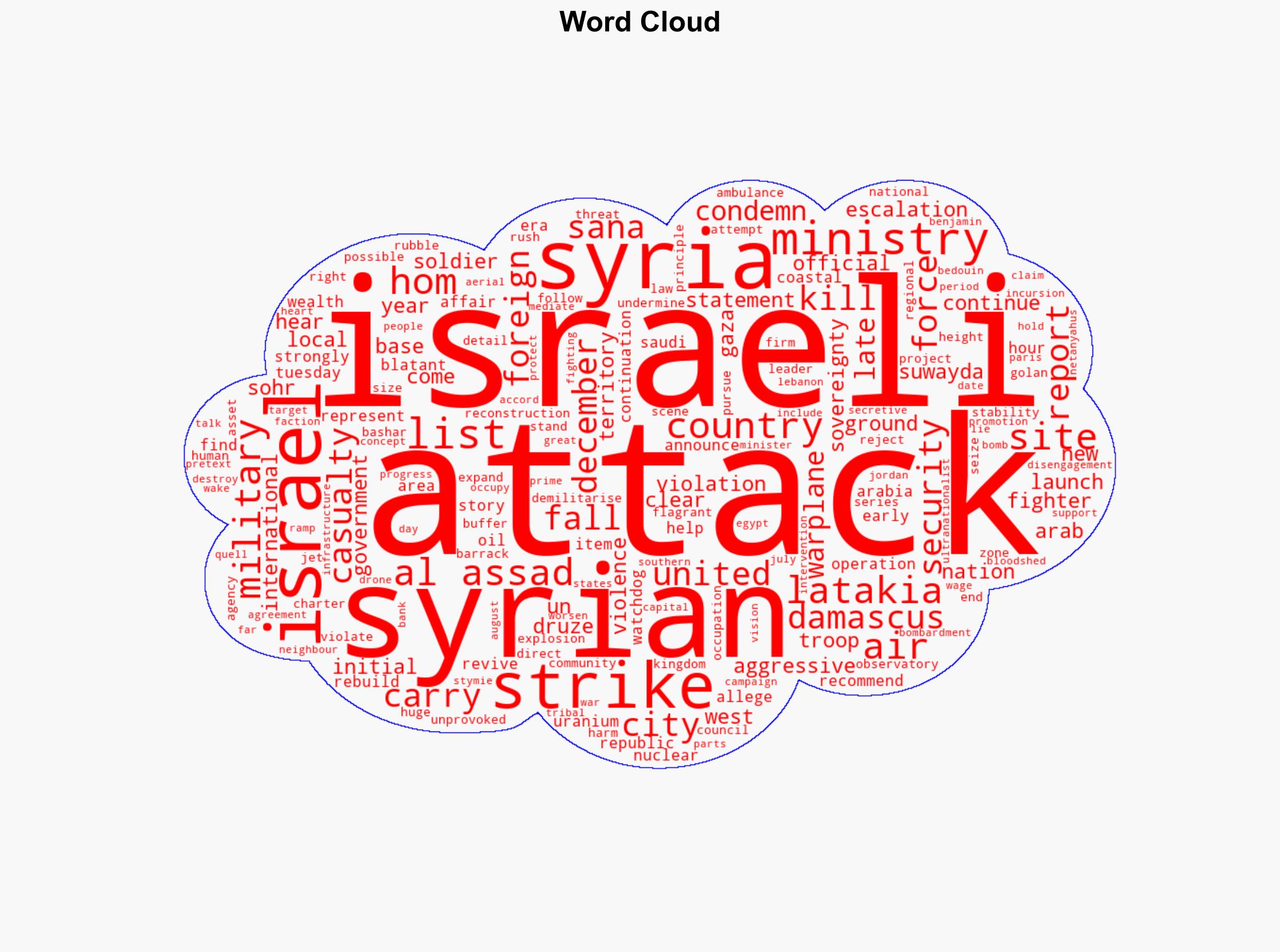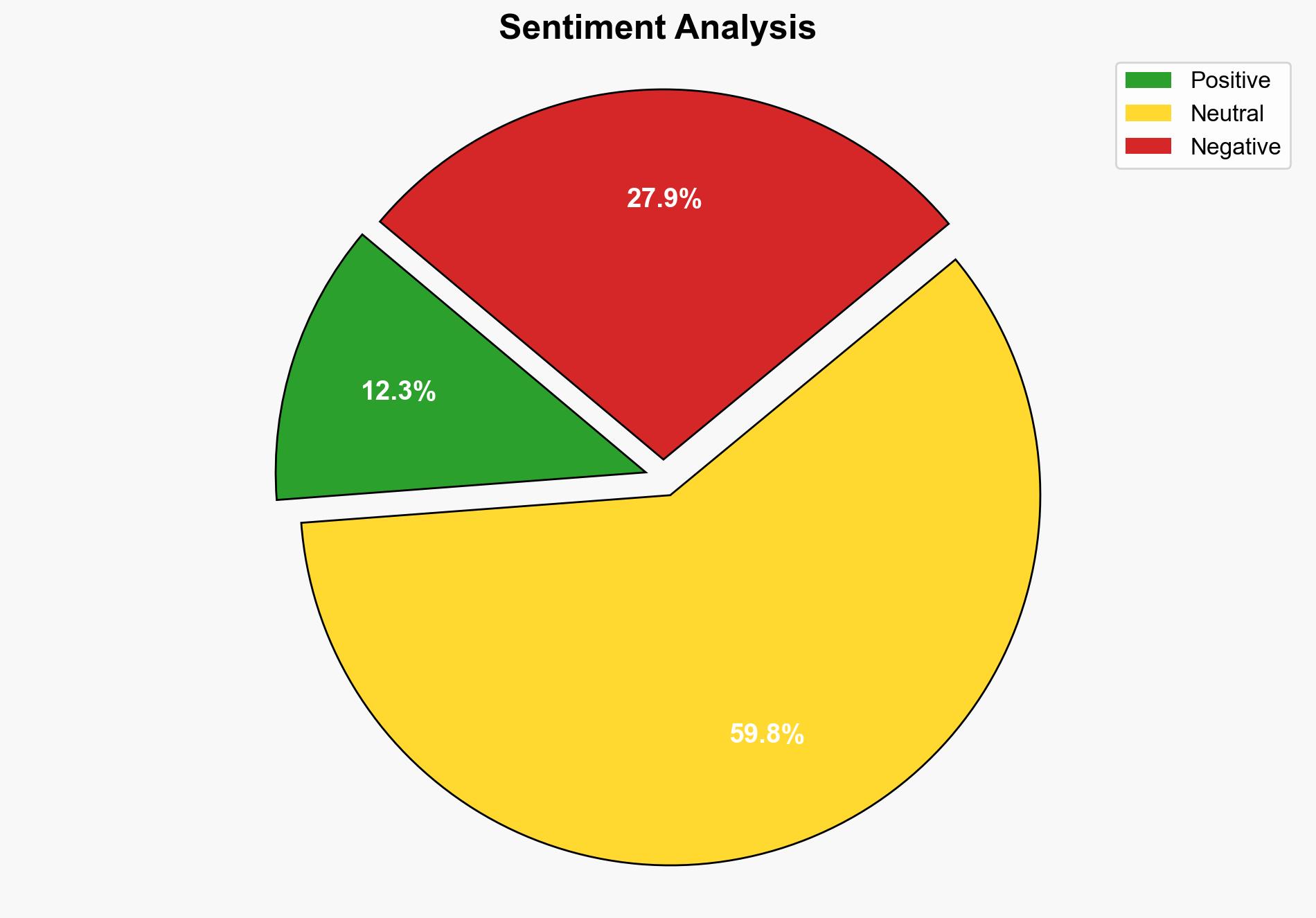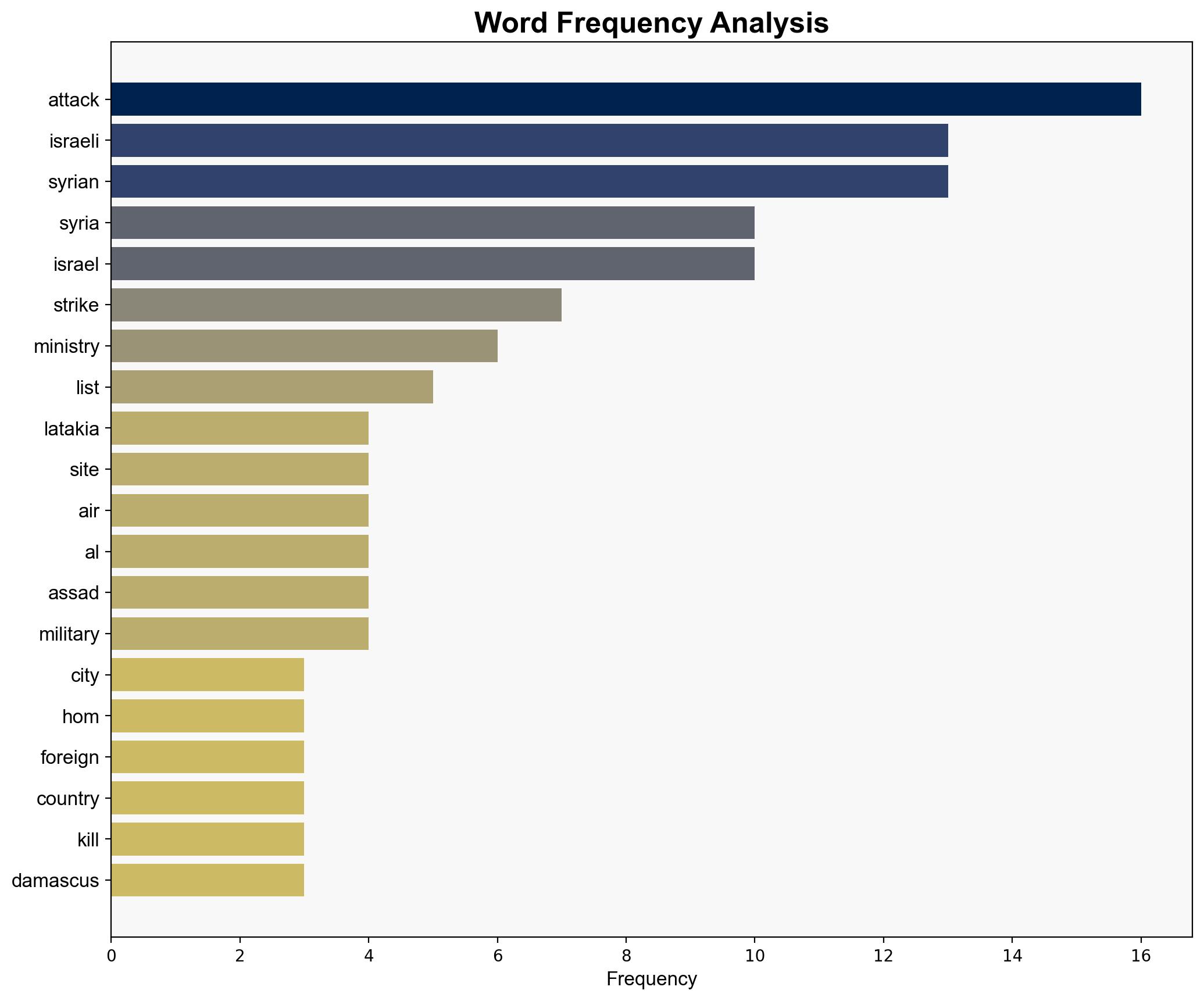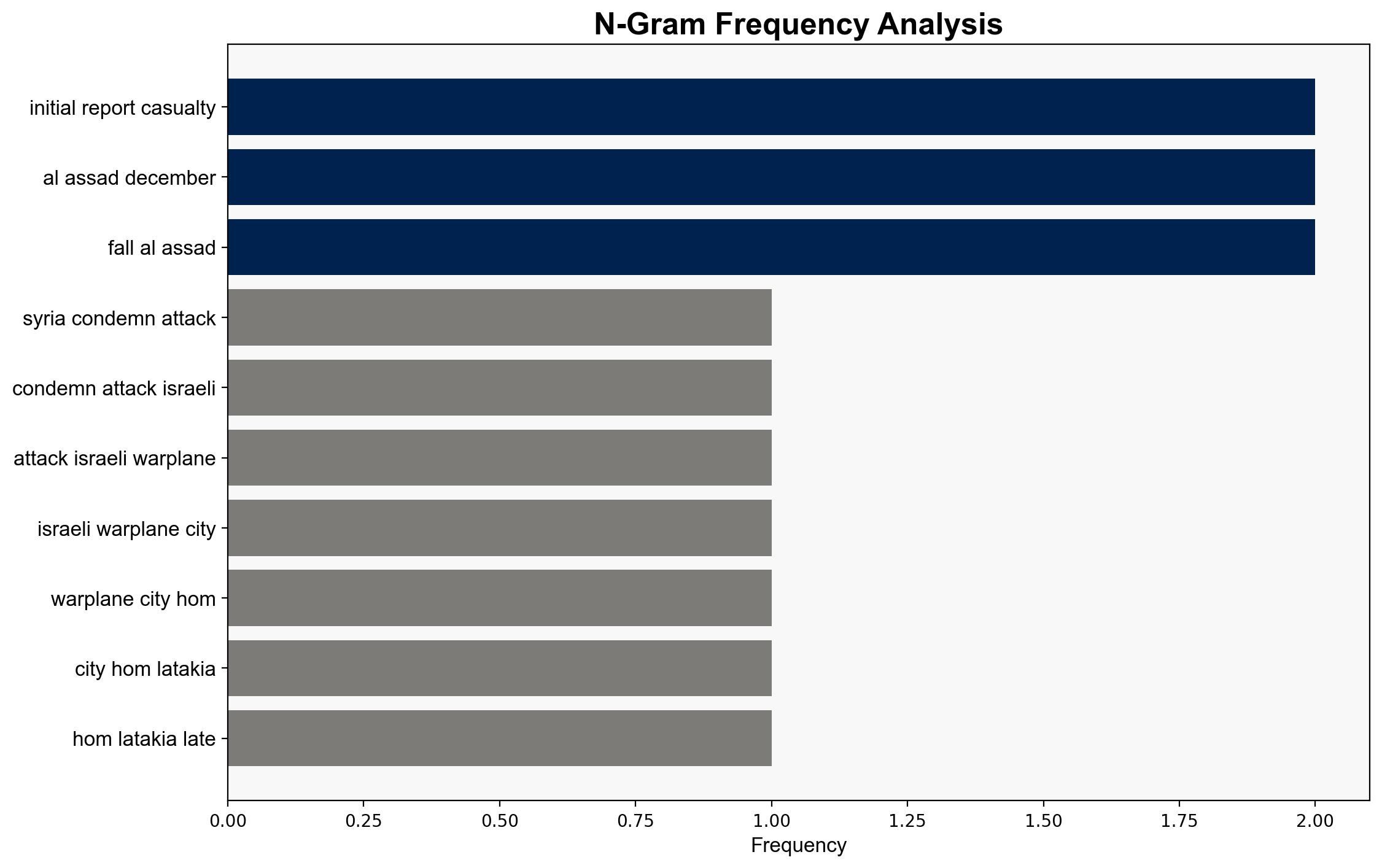Syrian government blasts attacks by Israeli warplanes on two cities Report – Al Jazeera English
Published on: 2025-09-09
Intelligence Report: Syrian government blasts attacks by Israeli warplanes on two cities Report – Al Jazeera English
1. BLUF (Bottom Line Up Front)
The most supported hypothesis is that Israel’s airstrikes are part of a strategic campaign to counter perceived threats from Syrian military infrastructure and Iranian influence in Syria. Confidence level: Moderate. Recommended action: Monitor regional military activities and diplomatic engagements to assess further escalation risks and potential for international mediation.
2. Competing Hypotheses
1. **Hypothesis A**: Israel’s airstrikes are a defensive measure aimed at neutralizing threats from Syrian military capabilities and Iranian influence, aligning with Israel’s broader security strategy.
2. **Hypothesis B**: The airstrikes are part of a broader Israeli strategy to provoke a response from Syria, potentially justifying further military actions or territorial claims.
Using ACH 2.0, Hypothesis A is better supported due to historical patterns of Israeli preemptive strikes in the region and statements from Israeli officials emphasizing security concerns. Hypothesis B lacks direct evidence but cannot be entirely dismissed due to regional tensions and historical territorial disputes.
3. Key Assumptions and Red Flags
– **Assumptions**:
– Israel perceives Syrian military sites as direct threats.
– Syrian government statements reflect genuine condemnation rather than strategic posturing.
– **Red Flags**:
– Lack of independent verification of casualty reports.
– Potential bias in reports from Syrian state media and affiliated sources.
– Absence of direct Israeli confirmation or detailed rationale for the strikes.
4. Implications and Strategic Risks
– **Geopolitical Risks**: Potential for escalation into broader conflict involving regional powers such as Iran and Russia.
– **Economic Risks**: Disruption of reconstruction efforts in Syria, impacting regional economic stability.
– **Psychological Risks**: Heightened tensions could lead to increased radicalization and recruitment by extremist groups.
– **Cascading Threats**: Possible retaliatory actions by Syria or its allies, leading to a cycle of violence.
5. Recommendations and Outlook
- Enhance intelligence-sharing with regional allies to monitor military movements and intentions.
- Engage in diplomatic efforts to de-escalate tensions, potentially involving international mediators.
- Scenario Projections:
– **Best Case**: Successful diplomatic intervention leads to a cessation of hostilities.
– **Worst Case**: Escalation into a wider regional conflict involving multiple state actors.
– **Most Likely**: Continued sporadic airstrikes with limited diplomatic progress.
6. Key Individuals and Entities
– Benjamin Netanyahu: Israeli Prime Minister, associated with the “Great Israel” concept.
– Bashar al-Assad: Syrian leader, under whose regime the targeted sites are located.
– Syrian Observatory for Human Rights (SOHR): Provides independent reports on the strikes.
7. Thematic Tags
national security threats, regional stability, military strategy, geopolitical tensions




